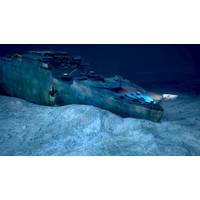
Inmarsat's Satellite Services for OceanGate Expeditions' 2022 Titanic Survey Expedition
wireless communications to maritime vessels and served as a crucial advancement in maritime safety.In 1992 the IMO, the United Nations agency responsible for ship safety, began the phase-in of a new system called Global Maritime Distress and Safety System (GMDSS). Inmarsat became the first satellite operator to meet the stringent requirements of the Global Maritime Distress and Safety System (GMDSS) for global safety communications. Today it remains the only organization offering the service worldwide."The Marconi radio used on the Titanic had a range of only a few hundred nautical miles.
New Data Safety Service for Inmarsat FleetBroadband
(MST) developed by Cobham SATCOM *All data accessed over MSDS to be captured and stored at new servers. Peter Blackhurst, Head of Maritime Safety Services at Inmarsat states, "Inmarsat has set the standard for maritime safety since its inception in 1979 and we remain the only satellite operator to gain International Maritime Organization (IMO) compliance with our legacy Inmarsat C and Fleet 77 safety services. "The introduction of new data safety services over FleetBroadband has been one of our long term goals and the new system, together with Voice Distress, will ensure that
Telenor Selects iDirect as Ground Infrastructure Platform
Telenor Satellite Broadcasting (TSBc), a European satellite operator, and iDirect, a company in satellite based IP communications, jointly announced that TSBc has chosen iDirect’s new Velocity product line as the ground infrastructure solution for its new THOR 7 high throughput satellite (HTS). Using iDirect technology, TSBc will deliver a Ka-band HTS payload of up to nine Gbps of throughput across 25 spot beams, providing capacity over the North Sea, Norwegian Sea, Mediterranean, Baltic Sea as well as the Middle East. TSBc chose the iDirect platform for several reasons. The platform will


 February 2025
February 2025





